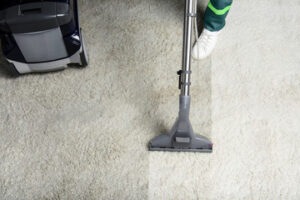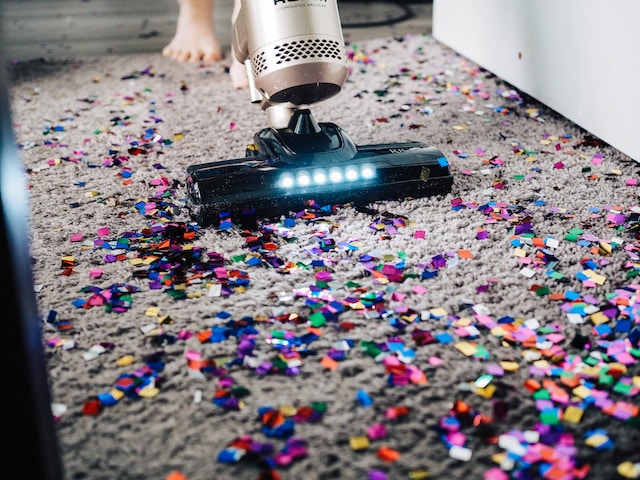Dirty carpets can become breeding grounds for bacteria, mildew, and fungi. These nasty elements release harmful airborne particles into your home, which can cause breathing problems for people with asthma and other respiratory conditions.
Carpet Cleaning Bentonville AR can help you maintain a clean, healthy environment and extend the life of your floors. Start by testing a cleaning solution on an inconspicuous area to ensure it doesn’t discolor your carpet fibers.

Despite vacuuming your carpets regularly, dirt and debris can still build up. One square foot of carpet can hold up to a pound of soil before it becomes visible. This debris can include everything from cigarette butts to pet hair. If this dirt remains in the carpet, it can cause it to deteriorate faster. A lack of cleaning also means unhealthy bacteria can thrive in the fibers, affecting your family’s health.
Regular vacuuming can remove surface dirt but not ground-in debris. The first step to getting rid of ground-in dirt is to spot clean the area with a cleaning solution. Put a diluted version of your preferred cleaning product in a spray bottle. Wet a white cloth and blot the stain until you no longer see the dirt transfer to the cloth. You may need to repeat this several times until the stain is completely removed.
For stubborn stains, use a specialized cleaner. This special formula is formulated to break down oil and electrically charged particles that are trapped in the carpet fibers. Apply the cleaning solution undiluted to a stained area of the carpet. Wait for 3 to 5 minutes before scrubbing the area with a scrub brush or a hard-bristled broom. This should help remove the lines of filtration soil as well as any other debris.
When your carpet is clean, it will look fresh and smell fresh. It will also be more comfortable underfoot. This is why it is so important to make a commitment to cleaning your carpets at least once every three months. This will also help prevent abrasions and reduce the likelihood of future permanent damage.
In addition to vacuuming, there are many other ways to keep your carpets as clean as possible. Place signs in entryways asking visitors to wipe their feet. This will help to keep grit and other debris from damaging the fibers. You can also use a lint roller to collect stray crumbs and to remove pet hair. Keeping your carpets clean can protect your investment as well as improve your home’s indoor air quality and the health of your family.
Stains can quickly build up on your clean carpets. While you may not be able to remove every stain, prompt action can prevent permanent discoloration and odors. Many people have heard various stain-removing “tricks” over the years, often involving strange concoctions and home remedies. The truth is that carpet stain removal mostly comes down to science and knowing how different materials react with your specific type of carpet.
A few common household substances that are difficult to remove from carpet include red wine, blood, coffee, and pet urine. Red wine is particularly problematic because it can stain light coloured carpets and leave a lingering smell. This makes it important to limit its use to rooms with hard flooring.
Spilled coffee is another common problem, especially in offices where people are desperate to wake up in the morning. While it is not as bad as spilled red wine, it can still be a pain to remove from the carpet. It’s best to act quickly and blot the stain with a clean, light-coloured cloth. For blood stains, it is best to use plain cold water or a mixture of one part hydrogen peroxide and one part white vinegar. Again, it is important to blot the stain and avoid rubbing because blood will coagulate if you do. If the stain is already dry, you can use special enzymatic cleaners to break down the proteins in the stain.
Another difficult stain is ink, especially if it is allowed to set. If you notice a stain like this, it is a good idea to call in a professional cleaner to minimize the damage. A professional can also help address odors associated with these stains.
Before using any cleaning products or solutions, always test them on a small, inconspicuous area of the carpet. This way, you will be able to determine whether the product is safe to use and whether it may cause any problems with your carpet. In addition, you should always ensure that the carpet is thoroughly dried after treatment. Trapped moisture can lead to mold and mildew problems, as well as a damaged subfloor.
Dust mites are tiny microscopic creatures that thrive in warm, moist environments. They feed on shed skin cells, and their feces produce harmful allergens that can trigger asthma in some people. The mites are more common in homes with carpeting, and they can build up on rugs, pillows, beds, and other furniture items. Regular cleaning can help reduce the number of mites and the allergens they release.
The best way to get rid of them is to replace wall-to-wall carpeting with hard surfaces, especially if anyone in the household has an allergy to dust mites. If you keep the carpet, vacuum it frequently with a high-efficiency or HEPA filter. Ideally, you should vacuum twice a week and use a wet vacuum for better results. Alternatively, you can use a steam cleaner, which kills the mites at 200 degrees.
Keeping humidity levels below 65% will also discourage the mites. If you use an air conditioner, set it to run on a dehumidifier mode at least once a day. You should also wash sheets and blankets in hot water – 140 degrees or higher — once a week.
Other steps that can help include removing fabric curtains and replacing them with vinyl or wooden blinds. You should wash your linens in hot water as often as possible, and you should consider using a mattress protector. If you have a pet, it’s important to groom them regularly and wash their bedding in hot water to prevent the spread of allergens.
If you’re struggling with allergy or asthma symptoms, schedule a professional carpet cleaning. Our experts can clean your carpets, kill the dust mites, and remove their allergens to improve your home’s indoor air quality.
Our services are designed to keep your home healthy and comfortable all year round. Contact us today to learn more about how we can help you! We’re proud to offer a range of cleaning options, including our innovative Encapsulation process. This innovative technology protects your carpet from mildew, mold, and other contaminants, while allowing for deep cleaning and stain removal.
If you have pets, keeping your carpet clean can be challenging. Muddy paw prints, pet hair and dander can easily get stuck in your carpet fibers, and accidents can happen. The good news is that with a few tips, you can keep your carpets looking great and smelling fresh.
Start by using a pet-specific stain and odor remover. These products are designed to break down the proteins that cause most pet stains. When applied to a wet stain, the solution will soak into the carpet and the pad, lifting the stains and absorbing the odors. Once the stain and odor have been removed, you can vacuum the carpet to dry it and eliminate any remaining odors.
It’s also important to use a carpet made from durable and easy-to-clean fibers. Nylon is the best choice for a pet-friendly carpet because it is highly durable and can be treated to resist stains. It’s recommended that you choose a low, cut pile style that won’t be damaged by pet nails snagging the fibers. You might even want to choose a color with a textured visual or fleck of color that hides dirt and debris until you’re ready to clean.
When choosing a carpet, read the manufacturer’s recommendations for both spot cleaning and long-term care. Not all carpet fibers can handle the same chemicals, and some may be harmed by certain cleaners. Sticking to the manufacturer’s guidelines will ensure that you’re using acceptable cleaning solutions and will not void your carpet’s warranty.
Another important tip for pet owners is to use area rugs and runners in high-traffic areas of the home. These will catch most of the pet’s dirt and debris, so they won’t need to walk on the carpet as much. It’s also a good idea to vacuum furniture regularly so that pet hair and dander doesn’t end up on the floor.
Finally, if you have a problem with pet urine accidents, try placing pee pads around the house to deter your pet from going to the bathroom inside. If this doesn’t work, you might need to see a vet because your pet might have an underlying health issue that needs to be addressed.




